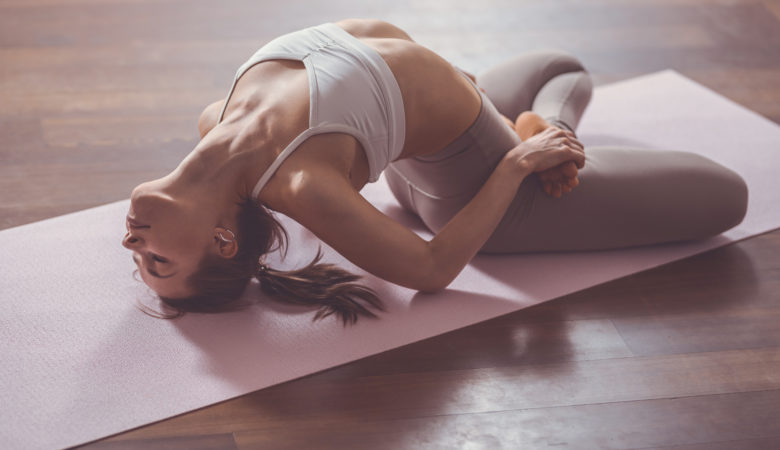Tantric Yoga Can Open Your Mind to Self-Awareness

You’ve probably heard of tantra before—but many people don’t realize that tantra isn’t just for sex. While tantric practices can be used to enhance your sex life, sex is only part of what tantra can help you accomplish.
Tantra is a method of connecting with your deepest self, whether through sex, meditation, breathwork or movement. No one knows exactly when tantra originated—guesses range from 500 B.C.E. to the 16th century C.E. What we do know is that it is meant to help personally liberate us, and help us get in touch with yourself on a soul level.
Could tantra help you better understand yourself? Here’s an overview of the practice.
Tantric yoga and self-awareness
Tantra is basically anything that helps you become more self-aware. The idea is to detach from any suffering occurring in your body, to achieve greater spiritual awareness. That can include meditation, breathwork, chanting and yoga. Traditional tantra is divided into two practices: the “white” version, which includes solo practices, as well as the “red” version, which includes the sexual practices. Aficionados point out that you can’t practice red tantra without a white tantra practice. Sexual tantra basically puts everything you learned on your own into practice with another person.
Tantric yoga respects the energy of both the body and spirit. As you cultivate your energy, you’re focused on purifying and cultivating your prana (life force) and activating your kundalini energy (divine feminine spiritual energy). You’ll move your physical body while creating a deeper connection to the divine.
Because tantra is a way to achieve spiritual liberation, there are some benefits to tantric yoga beyond relaxation and physical fitness. As you become more purposeful in your breath and mindful of your body, you’ll enjoy reduced stress and anxiety, better sleep, better quality of life…oh, and there are sexual benefits, too.
Practicing tantric yoga can also lead to greater self-love and awareness, as well as more confidence in the bedroom, better performance and a greater capacity for intimacy with another person.
Tantric yoga vs. other yoga practices
The difference between tantric yoga and other types of yoga is in the approach. Tantric yoga usually includes a variety of positions—but unlike Bikram yoga, they will vary with each session. Breathwork, chanting and meditation also contribute to increased self-awareness.
No matter which positions you’re guided to use, there should be a mix of forward bends, inversions, backward bends, side bends and twists. It’s usually best to start off with a yoga class—either online or in person—to receive proper guidance. Once you’re more familiar with the principles of tantric yoga, you might decide to try it on your own or with a partner. Some people even seek a tantric guru to deepen their understanding.
If you can’t find a specific tantric yoga class, try Hatha or kundalini yoga. Both have a strong focus on self-awareness and mindfulness.
Okay, but what about the sexy part?
Remember, white tantra is about developing a spiritual connection to your body and the divine. You generally will not encounter red tantra in a yoga class—but everything you’ve learned in your white tantra practice will benefit you in the bedroom.
If you want to make red tantra part of your own sexual and spiritual practice, try these books specifically selected by a tantra guru. They range from beginner introductions to advanced techniques for your tantric practices.
Incorporating tantra into your own life
Having a spiritual practice can deeply enrich your life, even if you’re on the secular side. No matter what you believe, we can always benefit from deepening our understanding of ourselves. Embracing tantric yoga is a great way to take some time out from daily obligations to get in touch with how we’re really feeling and thinking.
To incorporate tantric yoga into your own life, we recommend starting with a guided class. Make some time each week to take the tantric approach to yoga, breathwork and meditation: use the class time to focus on how your body and soul feel, and what might be making you feel that way. This mindful approach may lead to some helpful revelations, from “hey, exercising makes me feel pretty good afterward” to “I have to limit my time with the in-laws to be a better partner.” Remember, it’s all in the approach: become curious about the way your mind, body and spirit interact, and the yoga will set you free.

